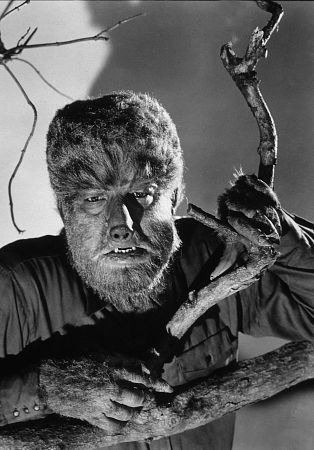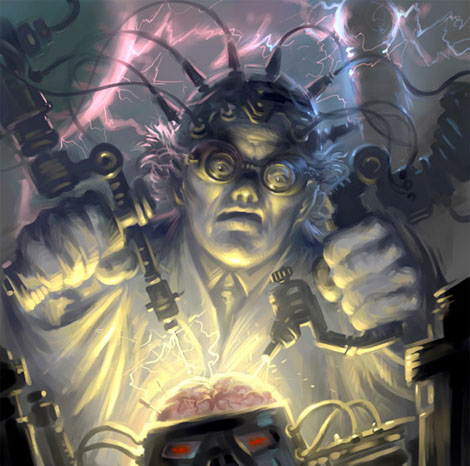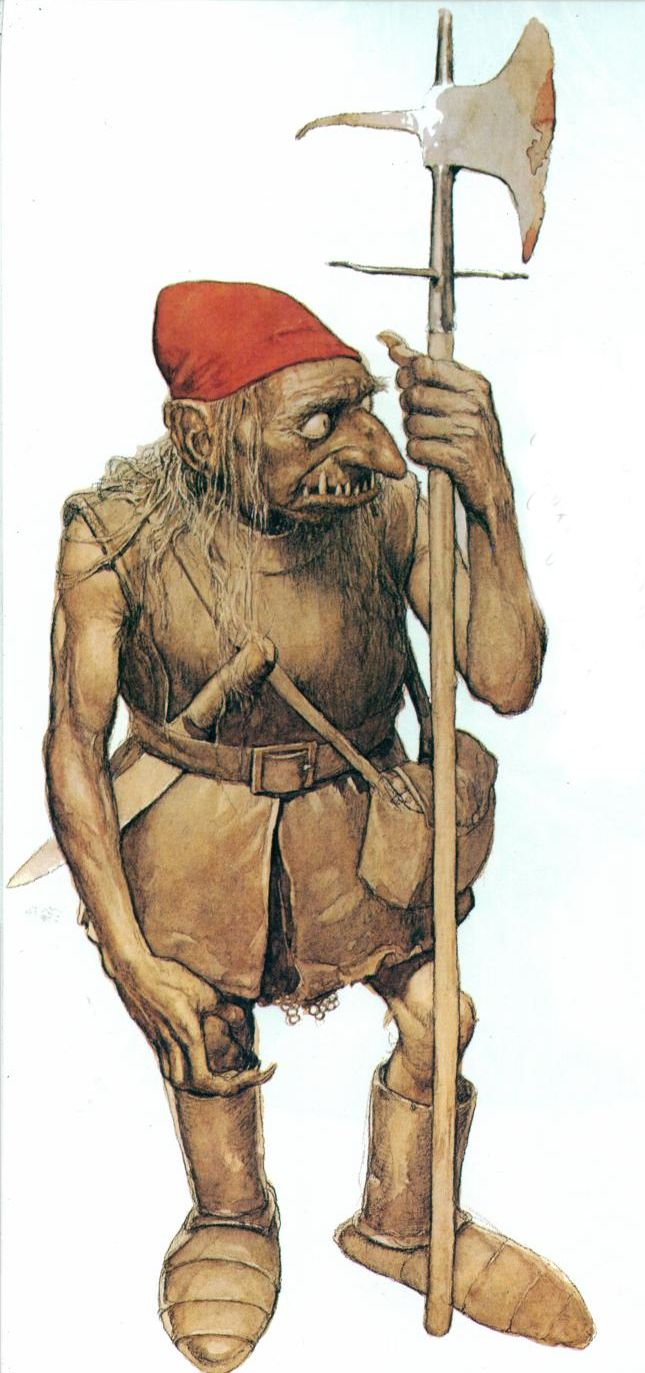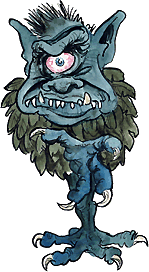 More monsters in my pocket you will see. Some of my older drawings when I was just began to experiment with inking. These are the aptly named Wolfman and the Mad Scientist, classic movie monsters. However my drawing to me at least seems fairly uninspired as far as what I could have done but they are on my list of 7 or so which I would like to redo to have a more interesting finish. As far as inking consistency goes this was one of my better early ones. Enough talk about the aspects here is some information about these well known monsters.
More monsters in my pocket you will see. Some of my older drawings when I was just began to experiment with inking. These are the aptly named Wolfman and the Mad Scientist, classic movie monsters. However my drawing to me at least seems fairly uninspired as far as what I could have done but they are on my list of 7 or so which I would like to redo to have a more interesting finish. As far as inking consistency goes this was one of my better early ones. Enough talk about the aspects here is some information about these well known monsters. The Wolfman as an iconic monster from the early days of horror talkies has much deeper history than most people know about. The Wolfman also known as Werewolf and Lycanthrope is a shape-shifting monster appearing in many parts of European folklore. Its name comes from most Nordic and Indo-European roots of "weir" or man and"wulf" as wolf and Lycanthrope as the Greek suffixes "Lyc"- for wolf and "Anthropos"- for human. It is not certain where exactly the Wolfman originated as it has roots all over Europe as wolves have inhabited it. Most modern incarnations of the Wolfman have been in western Europe in countries like The United Kingdom, France, Germany, and Denmark. However their legend has roots places like the United States, Canada, Mexico, Haiti, Peru, India, Uzbekistan, Australia, New Zealand, and Brazil.
The Wolfman as an iconic monster from the early days of horror talkies has much deeper history than most people know about. The Wolfman also known as Werewolf and Lycanthrope is a shape-shifting monster appearing in many parts of European folklore. Its name comes from most Nordic and Indo-European roots of "weir" or man and"wulf" as wolf and Lycanthrope as the Greek suffixes "Lyc"- for wolf and "Anthropos"- for human. It is not certain where exactly the Wolfman originated as it has roots all over Europe as wolves have inhabited it. Most modern incarnations of the Wolfman have been in western Europe in countries like The United Kingdom, France, Germany, and Denmark. However their legend has roots places like the United States, Canada, Mexico, Haiti, Peru, India, Uzbekistan, Australia, New Zealand, and Brazil.The common description of a Wolfman has not changed much since early writings of it. It is usually male and resembles a hominid wolf, usually standing on hind legs, lacking a tail, and being very aggressive. In almost all incarnations they kill and eat people which made them very terrifying. In more medieval incarnations they ate freshly buried corpses, and could be women. In some cultures the Wolfman could talk and had human eyes and had other directly human traits like human ears and hands. The most romanticized trait they may poses is transforming into Wolfmen at the break of a full moon, a trait which is shared by almost all cultures with Wolfmen. To become a Wolfman varies from culture to culture from swimming across sacred lake, being curse, being covered with magic salve, drank out of a wolf footprint, slept under a full summer moon, bidding Satan, or just falling into complete madness and ostracizing yourself from the world. However the most common is being bitten or scratched by a Wolfman and by the next turn of the moon you would become one. However Wolf Men are only in wolf forms at full moons and the rest of the time are regular people, but their a cultural differences on that. Some state you could find a Wolfman in human for by cutting them and if hair sprouted from the wound they were Wolfmen, others believed the had uni-brows and were always upset as they could remember the lives of people the took in wolf form, among others believe they were in constant bouts of exhaustion as they had exerted all their energy being Wolfmen.
Insofar as remedies go for the condition, usually the only one is death. Greeks believed you could tire out a Wolfman so much that essentially he would be too exhausted to become a Wolfman. in Medieval groups a Wolfman could be relieved of his ailment by either being operated on in vague surgeries, consuming wolfsbane, or exorcism. old Sicilian tales state that hitting the forehead of a Wolfman with a knife would cure them. Other less aggravated methods could be the German way of reciting their Cristian name 3 times, or in Danish cultures just scolding them. However Death in modern portrails has been the most common way of relieving Wolfmen. Common now is to shot them in the head or heart or the body in general with a silver bullet. other killing agents include Mountain ash, crucifixes, holy water, and mistletoe if applied directly onto or towards a Wolfman.
As popular as Wolfmen are they have used it to garner fame in both classical and modern culture. Early examples of Wolfman media were the Greek tales of Lycaon and poetry of Famous Greek poets like Ovid and Virgil along with tales written by Pliny the elder. It also appears in many unwritten Baltic and Nordic tales. Many Gothic horror novels were written about Wolfmen and the novel The Strange Case of Doctor Jekyll and Mr.Hyde had heavy Wolfman subtext. As Film grew so did a very visually appearance of the Wolfman in the icon 1941 film "The Wolf Man" starring Lon Chaney as the Wolfman and follows the story of a man returning to Wales and being bitten by a wolf and transforming into a Wolfman prowling the countryside only to be killed by his father who then sees his dead son return to human form. There were many Sequels in which he would meet and fight Frankenstein's monster, Dracula, The Mummy, and Abbott and Costelo. There have been more modern incarnations such as the films "The Howling" and "American Werewolf in London" which featured painful emphasis on the transformations of a Wolfman and the gore the can cause. Other newer Wolfman films include "Underworld" and its sequels, "The Wild", the humorous "Teenwolf", "Blood and Chocolate" and the new 2010 remake of the Wolfman. There also an innumerable amount of songs, Television programs, video games, books and comics based around and starring Wolfmen.

Mad Scientists are classic stock characters which are or cause evil. However a Mad scientist does not necessarily have to be evil they can be just insane, eccentric, bumbling, or sevantish. However a Mad scientist is always creating fiction technology and science to upset natural laws and balances and essentially to make the impossible possible. This is usually to put forward into a scheme which inevitably ends in disastrous consequences. Some may have benevolent or good spirited intentions, even if their actions are dangerous or questionable, which can make them accidental villains and can make them into unusual or anti-protagonists. Their main characterization is their obsession over their work leading them into hyper focused madness. And the reasons behind their obsessions can be comically trivial such as simply to settle a bet, prove a point, kill time, impress people, or to improve small elements of their lives. As appearances go, Mad scientists usually lack a specific appearance other than usually being ugly, ostracized, wearing glasses or goggles, disheveled hair, poor hygiene, dramatic posing and the occasional laying of a diatribe.
The archetype of a Mad Scientist has lived for millenniums, stemming from fears of those with esoteric knowledge and how it could be used against you. Many early incarnations of Mad Scientists were interpretations of Archimedes and Socrates who were believed to have developed more power through their discoveries and inventions that it essentially drove them insane trying to top what they had already accomplished. in The early Aristophane comedy "the Clouds" which has Socrates toys with old machines and creates implausible experiments to determine the weather patterns. Along with early stories Scientists were driven mad because of their prospects in alchemy or other ventures by handling of dangerous elements like Mercury and Radon which entered their bodies and poisoned their brains and muscles which was why hatters became "mad" and scientists like Sir Issac Newton went crazy from Mercury poisoning. And more modern inventors like Tesla and Edison were also thought of as mad for inventing things like supposed ghost capturing machines, earthquake machines, and even death rays.
Fiction was meant for the Mad Scientist, open to unlimited potential to essentially play god. One of the first fiction Mad Scientists was Doctor Frankenstein from the 1818 named after him and his monster which Frankenstein created in essentially the greatest upset of creation by creating life. Another would be the Classic tale of Doctor Jekyll and Mr.Hyde where Jekyll invents a formula in the cliche test tube concoction manner and tests it on himself turning into the abominable Mr.Hyde who terrorizes London as Jekyll goes in and out of Hyde phases and eventually killing himself to rid the world of Hyde. Other pre 1950s Mad Scientists include Doctor Faustus of the Faustus tale in which he sells his soul to the devil to obtain all knowledge and creating the allusion of a "Faustian bargain." Another would be the 1927 movie Metropolis where the very evil Mad Scientist Rotwang fills a dystopian world with lively robots, He would essentially fill the archetype for the evil Mad Scientist with a frizzy shock of white hair, a scar in the form of a robotic hand, a laboratory filled with steaming beakers and flasks with Tesla coils running electricity in an errie dark room. During the 1950 science fiction exploded with fears from the post Nazi and of then the Russian Soviets. This created a plethora of wide eyed Mad Scientists eager to create and destroy. One notable example would be Peter Sellars role as Dr.Strangelove in the movie of the same name where Dr.Strangelove is a psychotic ex-Nazi nuclear scientist who has an equally crazy independent right hand who Freudian slips comments of slaughter and genocide to his leaders and would essentially be the personification of fear of the power in science of the time. And in a time of nuclear fear and destruction the nuked Japan had created Godzilla featuring Mad Scientists behind the whole operation to engineer it. Along with Sci-fi to keep kids entertained, 10 cent comic books arose with Mad scientist villains such as Lex Luther as the mortal enemy of Superman and The Lizard to Spiderman among other countless Mad Scientists disfigured by their work and seeking revenge. In modern times Mad Scientists have taken many roles of parody like humorous protagonists as in the titular character of the cartoon Dexter's laboratory or another titular character of the web comedy Dr.Horribles sing-along-blog and more serious and dramatic tones like those involved in the Dahrma initiative in the television drama Lost.
Credit for information goes to wikipedia and cracked.com


